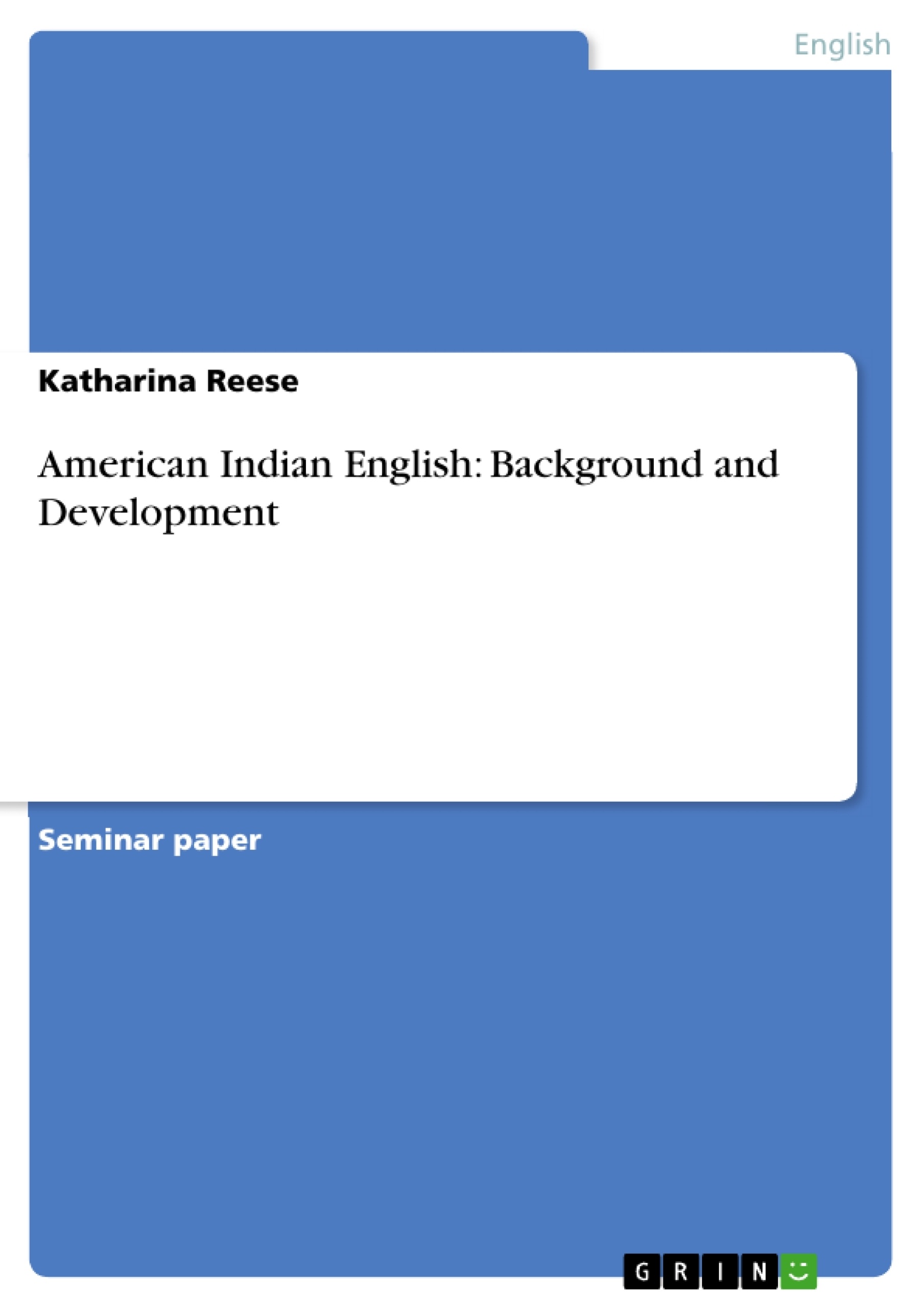When the first Europeans came to America, there existed more than 500 different Native American and Alaska Native languages. Through the contact with the English language and Euro-American cultures, the usage of indigenous languages started to decline. But it had an influence on the way Native Americans started speaking English.
Table of Contents
- Introduction
- History
- The Situation Today
- American Indian English varieties today
Objectives and Key Themes
This presentation aims to provide an overview of American Indian English, based on William Leap's 1993 book. It explores the development of this language variety, considering its diverse dialects and the historical and sociocultural factors that shaped its emergence.
- The diverse dialects of American Indian English and their origins.
- The impact of language contact on the development of American Indian English.
- The role of historical events, such as colonization and the establishment of Indian boarding schools, in shaping the language.
- The influence of non-standard varieties of English (Black English and Pidgin English) on American Indian English.
- The challenges and complexities inherent in studying such a diverse linguistic landscape.
Chapter Summaries
Introduction: This chapter introduces the concept of American Indian English, emphasizing its diversity and the complexity of understanding its development. It highlights the fact that there is not one single form of American Indian English, but many dialects, shaped by the varied ancestral languages of numerous Native American tribes and their contact with different European languages. The chapter explains that the pre-colonial Americas boasted over 500 distinct Native languages, belonging to various language families, a fact underscored by a visual aid (a map) showing the geographical distribution of these languages. The differing first-contact languages – English, French, Dutch on the East Coast and Spanish on the West Coast – further contributed to the linguistic diversity of present-day American Indian English.
History: This chapter delves into the historical development of American Indian English. In the early stages of European contact, only a few individuals within each tribe learned English, primarily for purposes of trade and negotiation. The native languages remained dominant within tribal communities, with only a limited influx of English loanwords. The chapter then identifies two major influences on the adoption of English: the non-standard varieties of Black English spoken by enslaved people and the Pidgin English used by Chinese railway workers. While these varieties had some impact, the significant turning point was the U.S. government's assimilationist education policies. These policies, exemplified by the forced removal of children to boarding schools where the use of native languages was strictly prohibited, aimed to eradicate Native American cultures, leading to the widespread adoption of English, often under coercive circumstances.
Keywords
American Indian English, language contact, language diversity, colonization, assimilation, Native American languages, Black English, Pidgin English, Indian boarding schools, historical linguistics, sociolinguistics.
Frequently Asked Questions: American Indian English
What is the purpose of this document?
This document provides a comprehensive preview of information about American Indian English, including the table of contents, objectives, key themes, chapter summaries, and keywords. It's based on William Leap's 1993 book and offers a structured overview of the topic for academic use.
What topics are covered in this overview of American Indian English?
The overview covers the history and development of American Indian English, its diverse dialects, the impact of language contact (including the influence of Black English and Pidgin English), the role of historical events like colonization and the establishment of Indian boarding schools, and the challenges of studying this diverse linguistic landscape. It emphasizes the lack of a single, unified "American Indian English" and highlights the significant variations stemming from diverse Native American tribal languages and contact with various European languages.
What are the key themes explored in the document?
Key themes include the diversity of American Indian English dialects, the historical and sociocultural factors shaping its development, the impact of language contact, the effects of colonization and assimilation policies (particularly the role of Indian boarding schools), and the complexities inherent in researching this linguistic field.
What is the historical context of American Indian English discussed in this overview?
The historical context traces the development from early European contact, where limited English adoption primarily served trade and negotiation, to the significant shift caused by assimilationist policies. These policies, particularly the forced removal of children to boarding schools forbidding native languages, led to widespread English adoption, often under duress. The influence of non-standard English varieties like Black English and Pidgin English is also explored.
How diverse is American Indian English?
The document strongly emphasizes the extreme diversity of American Indian English. It highlights that there isn't one single form but numerous dialects reflecting the pre-colonial existence of over 500 distinct Native American languages across various language families and the subsequent contact with different European languages (English, French, Dutch, and Spanish).
What are some of the challenges in studying American Indian English?
The document notes the inherent complexities of studying American Indian English due to its significant diversity and the need to consider the numerous contributing factors to its development, including the multitude of ancestral languages, historical events, and language contact phenomena.
What are the chapter summaries included in this preview?
The preview includes summaries for the Introduction and History chapters. The Introduction sets the stage by emphasizing the diversity of American Indian English and its origins in the numerous pre-colonial Native American languages and subsequent contact with various European languages. The History chapter delves into the historical development, focusing on the early limited English adoption, the influence of Black English and Pidgin English, and the significant impact of assimilationist policies exemplified by the Indian boarding schools.
What keywords are associated with this topic?
Keywords include: American Indian English, language contact, language diversity, colonization, assimilation, Native American languages, Black English, Pidgin English, Indian boarding schools, historical linguistics, sociolinguistics.
- Quote paper
- Katharina Reese (Author), 2009, American Indian English: Background and Development, Munich, GRIN Verlag, https://www.grin.com/document/162754



